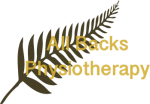Disks with slipped discs, also known as herniated disks, may cause severe discomfort and pain. The spine consists of several vertebrae. Between each vertebra lies a cushion-like disc. The soft inner layer of the disc protrudes over its tough outside layer; this may create pressure on nerves, causing discomfort, numbness, and weakness. Physical therapists are essential in helping people live an uninvolved and pain-free life by implementing effective techniques for Slipped Disc Treatment.
Targeted Exercise Regimens: One of the fundamental Specialized exercise programs is an element of a physiotherapist’s plan to rehabilitate slipped discs. The exercises are designed to build the muscles that support the spine, increase flexibility and reduce the pressure on the disc. Gentle stretching, core strengthening exercises, and aerobics with low impact could be utilized to help promote recovery and prevent further injury.
Manual Therapy Techniques: The physiotherapist utilizes manual therapy methods that provide hands-on therapy to help rehabilitate slipped discs. It could involve manipulation of the spine and traction to help improve the alignment of the disc, decrease pain, and improve the functioning of the affected disc. Human contact in these procedures contributes to relieving pain and speeds healing.
Posture Correction Strategies: Poor posture is often an essential factor in developing slipping aggravation discs. The physiotherapists collaborate with patients to find and correct the faulty positions that can cause stress on the spine. The process of educating patients about the correct body mechanics and ergonomics is essential to avoid the occurrence of future issues and to ensure life without pain.
Pain Management Through Physiotherapy: Physical therapists utilize a range of ways to treat pain to aid patients with irritation caused by slipped discs. Cold or hot Treatment, transcutaneous electrical neurostimulation (TENS) and various techniques are employed to ease pain and decrease inflammation. This allows for a less painful recovery procedure.
Lifestyle Modifications for Long-Term Relief: In addition to their in-clinic appointments, physiotherapists assist patients with lifestyle changes that lead to lasting relief. These include suggestions for ergonomic adjustment, whether at work or home, for maintaining a healthy weight and integrating certain routines into your daily life. This helps individuals actively participate in their recovery and lead a life without pain.
Gradual Progression and Monitoring: The physiotherapist designs treatment plans that focus on progressing slowly to ensure that exercise and treatments are introduced in a manner that is appropriate for each individual’s needs. Continuous monitoring permits changes to the treatment program when needed. This ensures that the rehabilitation process is custom-made to meet each patient’s specific requirements and level of progress.
Collaborative Approach to Treatment: A successful recovery from a slipped disc calls for a cooperative approach involving the orthopaedic specialist, physiotherapists, and other medical experts. They work with other healthcare professionals to create a complete and well-coordinated treatment program, increasing the odds of success for people to live free of pain.
Home Exercise Programs for Continual Improvement: The physiotherapists Offer home training programs specifically developed to help improve the results achieved during clinic visits. They allow people to perform their workouts independently to ensure continued improvement while strengthening the methods for successfully rehabilitating a slipped disc.
Empowering Individuals for Pain-Free Living: As a result, physiotherapists are essential in helping people live an uninhibited lifestyle through various treatments for slipped discs. With the help of specific exercises, manual therapies, posture-correcting strategies, and collaborative Treatment, they help people manage their overall health and well-being. It’s not about healing a slipped disc but pursuing an ongoing, pain-free, sustainable life.

